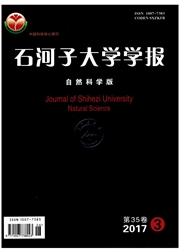

 中文摘要:
中文摘要:
水资源调控是不同区域和用水户之间有效公平分配水资源的重要途径,本文以新疆玛纳斯河流域为研究对象,以水资源供需缺水量最小为优化目标,在分析耗散结构、协同学、有序原理和临界控制论的基础上,应用多维临界调控模型对玛纳斯河流域水资源系统进行行业间优化调控。研究结果表明:2020年,通过工业节水30.8%、农业节水1.2%和污水资源化1.38×108m^3,可使系统熵由0.34降低到0.15;2030年,通过工业节水54%、农业节水1.6%和污水资源化1.89×108m^3,可使系统熵由0.34降低到0.15;2030年的缺水量比2020年的缺水量减少了0.4×108m3,可实现水资源系统的有序发展。研究成果对解决灌区水资源供需矛盾、提高水资源高效利用具有重要意义。
 英文摘要:
英文摘要:
Regulation of water resources is an important way in different regions and among water users effective and equitable distribution of water resources. In this paper, the research object is the Manas River Basin in Xinjiang and the optimization goal is the minimum water shortage of supply and demand. The optimal regulation of water resources system is analyzed by using the multi-dimension critical adjustment model based on the analysis of dissipative structure, synergetic theory and critical control theory in Manas River Basin. The results show that 30.8% of the industrial water saving, 1.2% of agricultural water saving and 138 million cubic meters of waste water resources can make the system entropy reduced from 0.34 to 0.15 in 2020. 54% of the industrial water saving, 1.6% of agricultural water saving and 189 million cubic meters of waste water resources can make the system entropy reduced from 0.34 to 0.15 in 2030. And that can achieve the orderly development of water resources system. The research results have important significance to solve the contradiction between supply and demand of water resources in irrigation districts and to improve the efficient utilization of water resources.
 同期刊论文项目
同期刊论文项目
 同项目期刊论文
同项目期刊论文
 期刊信息
期刊信息
